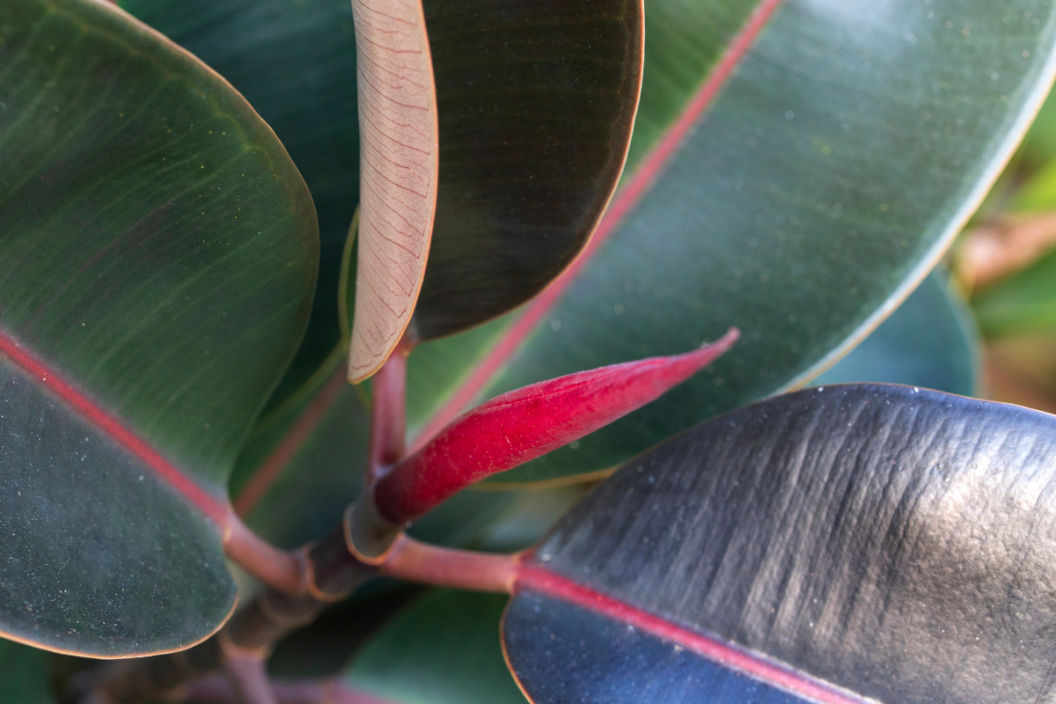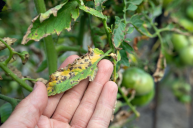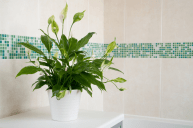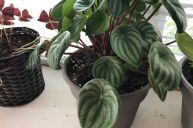"Oops, there goes another rubber tree plant!" That's certainly not something you want to sing about your houseplant, but if you've just bought one of these indoor plants, you might not know proper rubber tree plant care. We're here to help before you accidentally kill off your new plant.
What Are Rubber Tree Plants?
Rubber tree plants are also known as Ficus elastica, and are trees that can grow pretty tall if given the right care.
Rubber plants are native to southern China, Southeast Asia, and Indonesia, according to The Sill. They are part of the fig family, Moraceae. They usually have dark green leaves, but can also be variegated with other colors like red, yellow, cream, and lighter green in the leaves.
Rubber Tree Plant Care
For a serious houseplant person, these might seem like somewhat low-maintenance plants. For someone who doesn't want anything more difficult than a spider plant, they might seem a little more fickle. Rubber plant care can be a little more complicated than the average houseplant, but it isn't too bad.
Generally, rubber tree plants like bright light but prefer indirect light. Getting light from a window with a sheer curtain is probably your best bet. They won't be as happy with direct sunlight and definitely won't do well in low light. Yellowing of the lower leaves can indicate illness and should inspire you to check their light levels, moisture levels, or both.
Rubber tree plants can be a little picky about their moisture levels. Overwatering can cause their leaves to turn yellow and even fall off. It's a good idea to water them infrequently and to allow the soil to dry out between waterings after soaking them thoroughly until the water exits the drainage holes.
You should try to increase water during its growing season and cut it back during the plant's dormant season. If the glossy leaves droop, it might need just a bit more water. Overwatering your rubber tree can result in root rot and other moisture issues, leading to repotting or even the death of your new plant.
"It is also a good idea to wipe off the leaves of your rubber tree houseplant with a damp cloth or spritz it with water," Gardening Know How says. So, misting the leaves now and again isn't a bad call.
As far as temperature goes, while these plants don't really like cold drafts, but they should be okay at room temperature.
Other Rubber Tree Plant Tips
When it comes to propagation, rubber tree plants can be gently nudged into getting new growth and can even create new plants. To repot, simply take a small branch from a healthy rubber tree and put it in good potting soil or water to let it root. Dipping the cutting into a rooting hormone may help, as can air layering and a good potting mix suitable for new growth.
Finally, rubber tree plant care requires just a bit of watching out for problems like mealybugs and aphids. All you need to do if you spot them is spray some Neem oil, and be sure to regularly wipe down the leaves to keep them at bay.
With a little bit of care, these wonderful plants can decorate your home for years!





